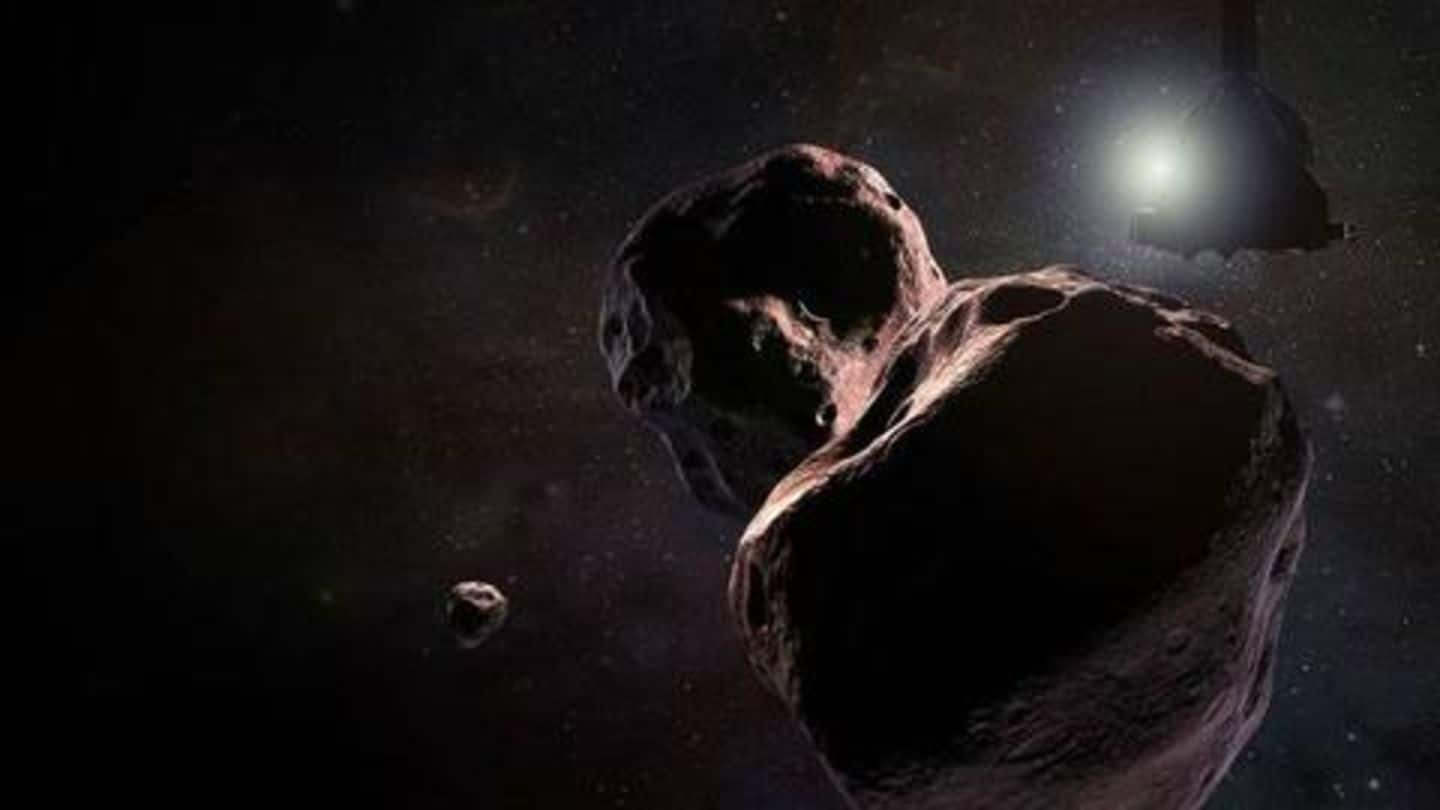
NASA releases first detailed images of faraway 'world', Ultima Thule
What's the story
2019 seems to have started on a high note for NASA. On the first day of the new year, NASA's New Horizons spacecraft flew past and photographed the 'snowman-shaped' Ultima Thule, the most distant and possibly the oldest cosmic body ever observed by a spacecraft. The close-up photos of Ultima Thule lend support to a theory of planet formation. Here are the details.
Quote
Another cosmic feather in New Horizon's cap
"In addition to being the first to explore Pluto, today New Horizons flew by the most distant object ever visited by a spacecraft and became the first to directly explore an object that holds remnants from the birth of our solar system," said NASA Administrator Jim Bridenstine.
Ultima Thule
Ultima Thule was discovered in 2014, but we knew little
Ultima Thule was first discovered by a telescope in 2014, and prior to New Horizons' flybly, scientists only had a blurry image of the object, which resembled a bowling pin. Now, scientists have found that Ultima Thule is 19 miles long, and completes its rotation in 15 hours. They have also found that the object, with two lobes, is shaped like a snowman. But, why is it important?
Observations
What gives Ultima Thule its weird, dual-lobed shape?
Well, Ultima Thule has now become the first inhabitant of the rocky outer ring of the solar system (the Kuiper belt) that scientists have seen up close. The 'snowman' shape indicates that Ultima Thule is a "contact binary" - the object's shape is the result of two spherical rocks fusing together in the early days of the solar system.
Theory
Images of Ultima Thule are important for understanding planet formation
Further, there's no evidence of damage at the point of contact, indicating that the joining of the two bodies was gentle, and not a catastrophic collision. This lends support to a theory of planet formation that holds that planets are formed by a gentle accumulation of cosmic objects, rather than through catastrophic collisions between them.
Quote
A physical representation of the beginning of planetary formation
"New Horizons is like a time machine, taking us back to the birth of the solar system. We are seeing a physical representation of the beginning of planetary formation, frozen in time," said Jeff Moore, the mission's geology manager.
Birth
So, how did Ultima Thule form?
So, how was Ultima Thule born? Scientists believe that around 4.5 billion years ago, just millions of years after the formation of the solar system, dust and pebbles clumped together to form the object's two lobes - Ultima and Thule. These two objects then eventually touched each other at a speed of around a few miles per hour, and fused into one object.
Twitter Post
In photos: The formation of Ultima Thule
#UltimaThule used to be 2 separate objects. It likely formed over time as a rotating cloud of small, icy bodies started to combine. Eventually, 2 larger bodies remained slowly spiraled closer until they touched, forming the bi-lobed object we see today: https://t.co/ZuxLDtzW9c pic.twitter.com/FwWDAaAdey
— NASA (@NASA) January 2, 2019
Other details
What other things we got to know about Ultima Thule
Yet, that's not all. Color images from New Horizons revealed that Ultima Thule, like other Kuiper Belt objects, has a dark reddish hue, although it is thought to be primarily made of ice. Scientists believe the reddish hue is the result of space radiation changing the contaminants within ice to a reddish color. However, this is just the start, and scientists have promised more details soon.
New Horizons
What are NASA's plans for New Horizons?
Meanwhile, it must be said that New Horizons, indeed, is living up to its name. Despite having already explored newer horizons for humankind, the spacecraft's mission is far from over. Its subsystems are healthy, and it has sufficient fuel to operate for another 15-20 years. Given NASA's plans to extend its mission, New Horizons will continue to boldly go where no man [spacecraft] has gone before.